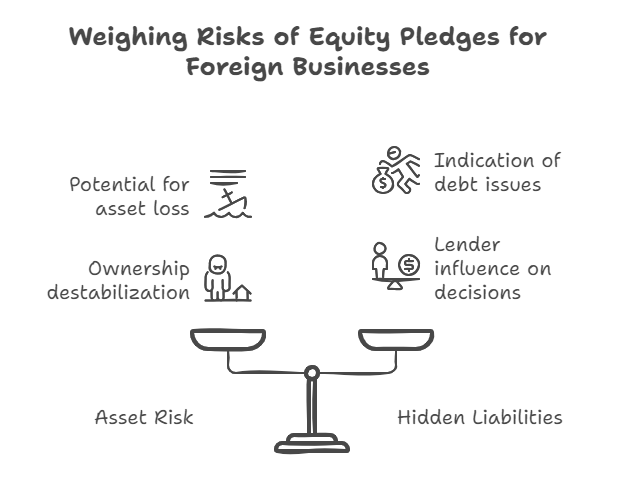Imagine this: You’ve negotiated a promising joint venture with a Chinese manufacturer. Contracts are signed, funds are transferred, and operations begin. Six months later, a court order freezes the factory’s machinery. Why? Your partner had pledged its equity shares to secure an unpaid loan, a fact buried in undisclosed public records. The assets you counted on were never truly free.
This scenario is not theoretical—it’s a recurring risk in cross-border business with Chinese entities. Equity pledges (股权出质) are a common but often overlooked financing tool in China, turning a company’s ownership rights into collateral. For international partners, failing to identify these encumbrances can lead to catastrophic financial exposure.

What Exactly is an Equity Pledge?
An equity pledge is a legal arrangement where a shareholder uses their company shares as collateral for a loan or obligation. If the borrower defaults, the lender gains the right to seize and sell those shares. In China, this practice is governed by the Company Law (Article 159) and must be registered with the Administration for Market Regulation (AMR) to be enforceable. Unlike informal agreements, registered pledges are public and binding, directly impacting asset ownership.
Why Equity Pledges Matter to Foreign Businesses
- Asset Risk: Pledged shares can be auctioned off, destabilizing ownership and operations.
- Hidden Liabilities: A pledge often signals cash flow problems or high debt.
- Control Uncertainty: Lenders may gain influence over business decisions.
Where to Find Pledge Records
China mandates disclosure of equity pledges through two primary channels:
- National Enterprise Credit Information Publicity System (NEEQ): The government’s official registry. Search for the company, navigate to “Equity Pledge Registration” (股权出质登记信息).
- Official Enterprise Credit Report: A certified document consolidating NEEQ data, including pledges. Example: The sample report for Xintou Huaying Petrochemical explicitly states: “No equity pledge registration information” (Page 13).
When reviewing a Chinese company’s credit report, scrutinize:
- Pledge Details: Pledgor, pledgee, amount, term.
- Default Clauses: Conditions triggering share seizure.
- Absence of Records: Verify with original NEEQ data. Cross-checking is critical—some companies may delay disclosures.
⚠️ Case Study: In 2023, a European investor lost $2M after a Shanghai supplier’s pledged shares were liquidated. The pledge was recorded in NEEQ but missed in their initial due diligence.
How to Protect Your Business
- Demand Official Reports: Always obtain an Official Enterprise Credit Report from AMR-authorized providers. It’s the only document with legal authority.
- Verify with NEEQ: Cross-reference the report against the live NEEQ database.
- Legal Authentication: For overseas use, reports require notarization and apostille (Hague certification). An unauthenticated report holds no weight in foreign courts.
When Risks Are Found
- Negotiate Clauses: Demand warranties against undisclosed pledges in contracts.
- Escrow Arrangements: Hold payments until pledges are cleared.
- Exit Strategy: Walk away if liabilities outweigh opportunities.
Key Takeaways
| Equity Pledges | Legally binding share collateral registered with AMR. |
| Risks | Asset seizure, hidden debt, loss of control. |
| Verification | Use Official Enterprise Credit Reports + live NEEQ checks. |
| Authentication | Reports for overseas use must be notarized and apostilled. |
Equity pledges are a visible risk—if you know where to look. Partnering with a Chinese company without verifying their credit report is like navigating a minefield blindfolded. The Official Enterprise Credit Report isn’t just paperwork; it’s your X-ray into hidden financial traps.
